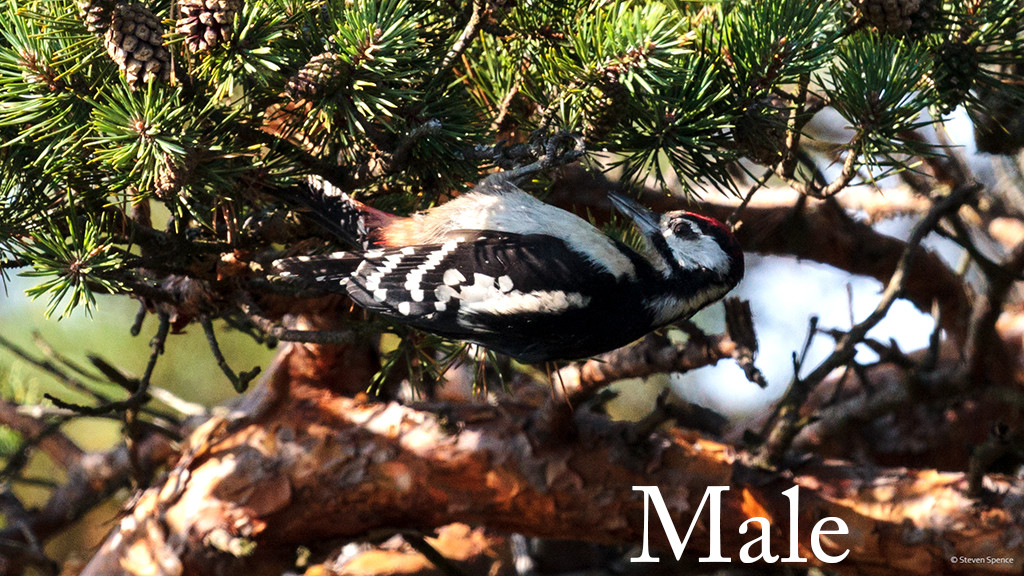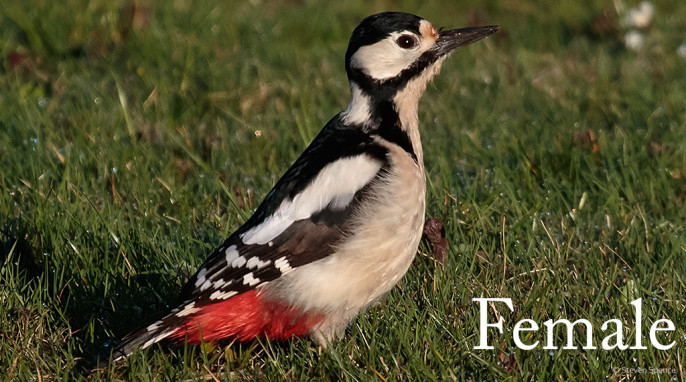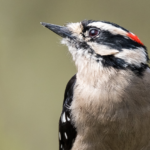Drumming with the Great Spotted Woodpecker
Meet the great spotted woodpecker. Learn where and how to spot them, and what they sound like. Photos and audio included.
Drumroll, Please!
May is family time for the great spotted woodpecker. Woodpecker pairs will have begun their courtship at the end of winter, a ritual that involves the male drumming his beak against hollow wood 10 to 20 times in just 2 seconds. This serves to mark his territory and alert a female to his presence. Females will also drum briefly to make themselves known when entering a male’s territory. Click the audio play button below to hear the bird drumming.
Great spotted woodpeckers nest in tree trunks. Typically, the nest will be around 4 meters off the ground and 30 centimeters deep. It will have a small oval opening, and the bottom of the nest is lined with wood chips. The location will be reused the following year if it hasn’t been taken over by an owl or a starling.


The female lays between 4 and 7 eggs in mid-May to early June, which hatch after being incubated for 14 to 16 days. Both female and male great spotted woodpeckers feed the brood for about 4 weeks. The young learn to fly after approximately 3 weeks, but the parents will continue to feed them for one more week. The young woodpeckers are sexually mature around one year old. A great spotted woodpecker has a life expectancy of up to 11 years in the wild.
More about the Birds
As the great spotted woodpecker uses its bill for hammering and chiseling wood, its skull has a very strong bone structure and makes use of cartilage as a shock absorber. The bird feeds on insects, other invertebrates, and seeds. Sometimes it will eat other birds’ nestlings.
When looking for insects in tree trunks, the woodpecker will spiral upwards, stopping at short intervals to tap the bark. It listens to the sound of the tap reverberating through the wood, which enables it to detect hollow areas that may contain insect larvae. It then pokes a hole into the tunnel and extract the insect using its sticky tongue, which can extend 3.8 centimeters.
The great spotted woodpecker will also use its beak to open up flower capsules, such as thistles, to get at insects. When eating nuts or trying to extract the seeds from fir cones, the woodpecker will find a crevice in the tree, wedge the cone or nut into it, and then hammer the seed container open.
Where and How to Spot a Great Spotted Woodpecker
Great spotted woodpeckers are quite common. Found throughout much of Asia and almost all of Europe, they live in both deciduous and coniferous woodlands and park areas. It is territorial and does not migrate. In Europe, its range extends up into Scandinavia, southern Scotland, and Ireland. In the UK, there are 140,000 breeding pairs. In Germany, there are over 600,000 breeding pairs.
This woodpecker is similar in size to a Eurasian blackbird–about 23 centimeters from beak to tail. It weighs from 60 to 90 grams. The female and male are similar in appearance, but the male has a distinctive red mark on the nape of its neck.
In 1997 the Buntspecht (great spotted woodpecker) was named the German Bird of the Year. In 2014, the title went to the Grünspecht (European green woodpecker) and its seriously long tongue.




